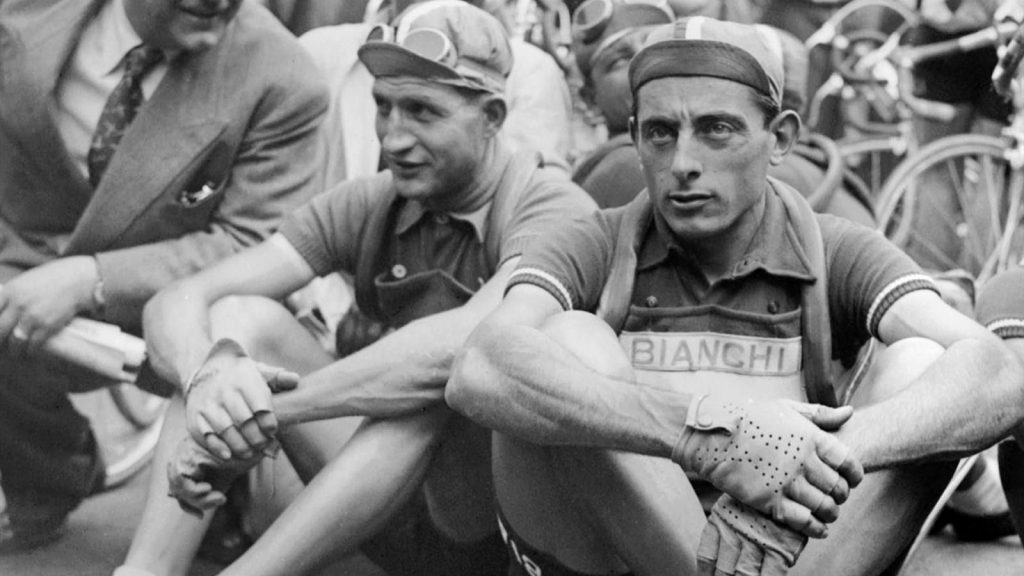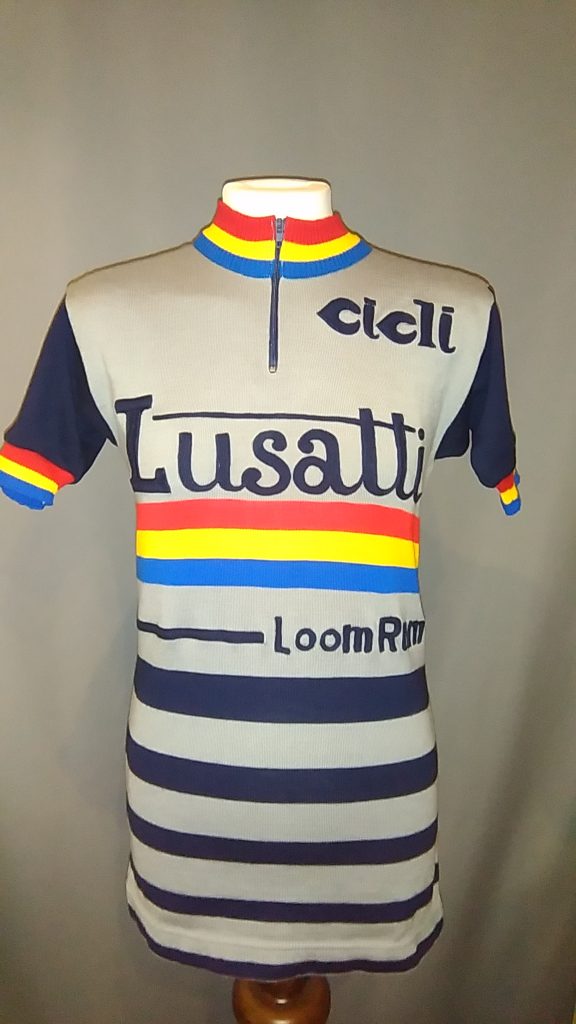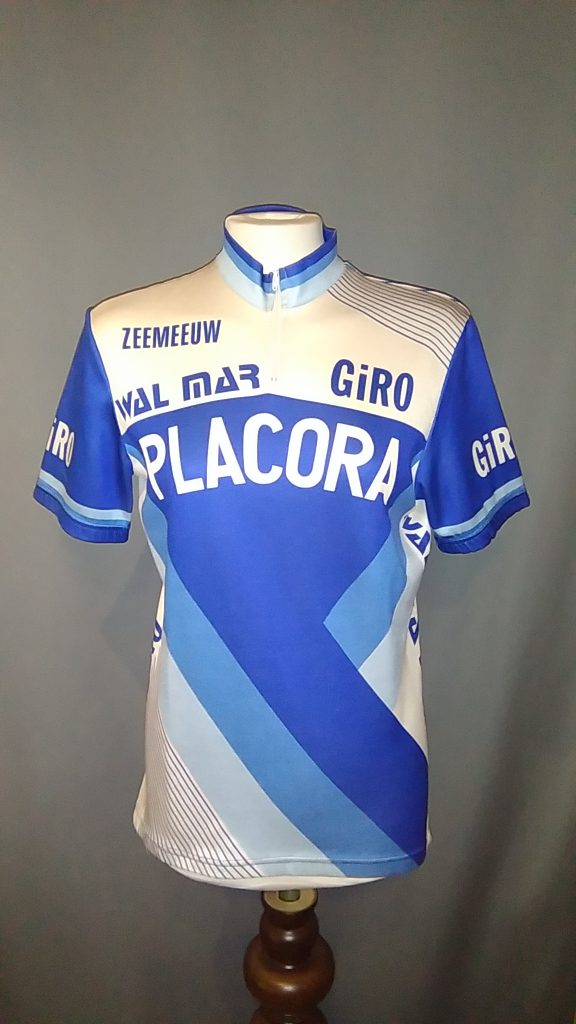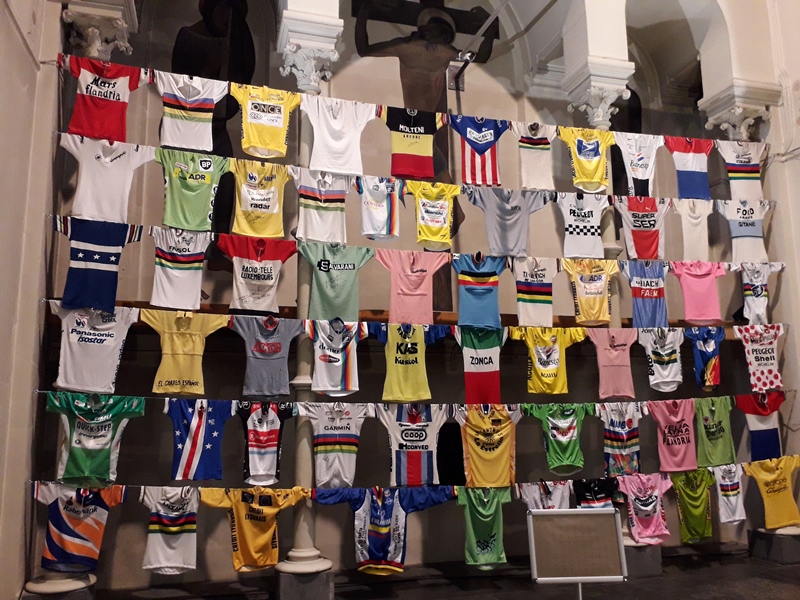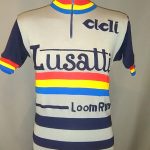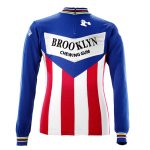If you look at the narrow tight cycling jerseys of today, they no longer resemble the cycling jerseys worn by the pioneers of cycling. In the past, only wool was customary and the sweaters were not tight around the body. Now they fit perfectly on the body and feature the latest technology used in the textile sector.
Below is a brief overview of the evolution from cycling jerseys to modern cycling or to the emergence of Lycra.
Cycling jersey with high turtleneck
The very first cycling jerseys were made of wool that was ideal to protect the riders from the cold on their long solitary rides but also had excellent sweat absorption capabilities. The sweaters had a high turtleneck with a side opening with buttons that ran from the neck to the shoulder.
The sleeves could be short or long and had 2 pockets in the back and sometimes 1 pocket in the front, usually made from a piece of surplus.
The jerseys usually had only a few colors, some even 1 color, on which the name of the sponsor was embroidered: Legnano, Bianchi, Maino, Michelin, Wolsit, ...
This type of cycling jersey was used until about the 1930s when it was gradually replaced by the cycling jersey with classic collar.
Cycling jersey with classic collar
With this new type, the closure is no longer lateral but now at the front, still with buttons. Also here still pockets at the front (2) and at the back (3). The sweaters are still in wool but the turtleneck has now been replaced by a classic collar. Most common are those with a horizontal band on which the name of the sponsor is embroidered, but now not only at the front but also at the back.
Cycling jersey with collar with zipper
From the 60s of the last century, cycling jerseys with a classic collar gradually disappear and are replaced by the type with a lowered collar. The buttons will be replaced by a zipper, the front pockets will also disappear and are now limited to 3, which has remained unchanged until now.
The jerseys are still made of wool but the names are now no longer embroidered but printed on the jerseys, more colors are also appearing and more and more names of sponsors and logos.
Cycling jersey in lycra
In 1977, the Italian Castelli put an end to wool cycling jerseys with the creation of the first model in lycra, a revolution in cycling. The jerseys keep their shape but are now lighter and above all more pleasant to wear.
After that, many different types of materials came onto the market that we classify in modern cycling and which we will not talk about here.


